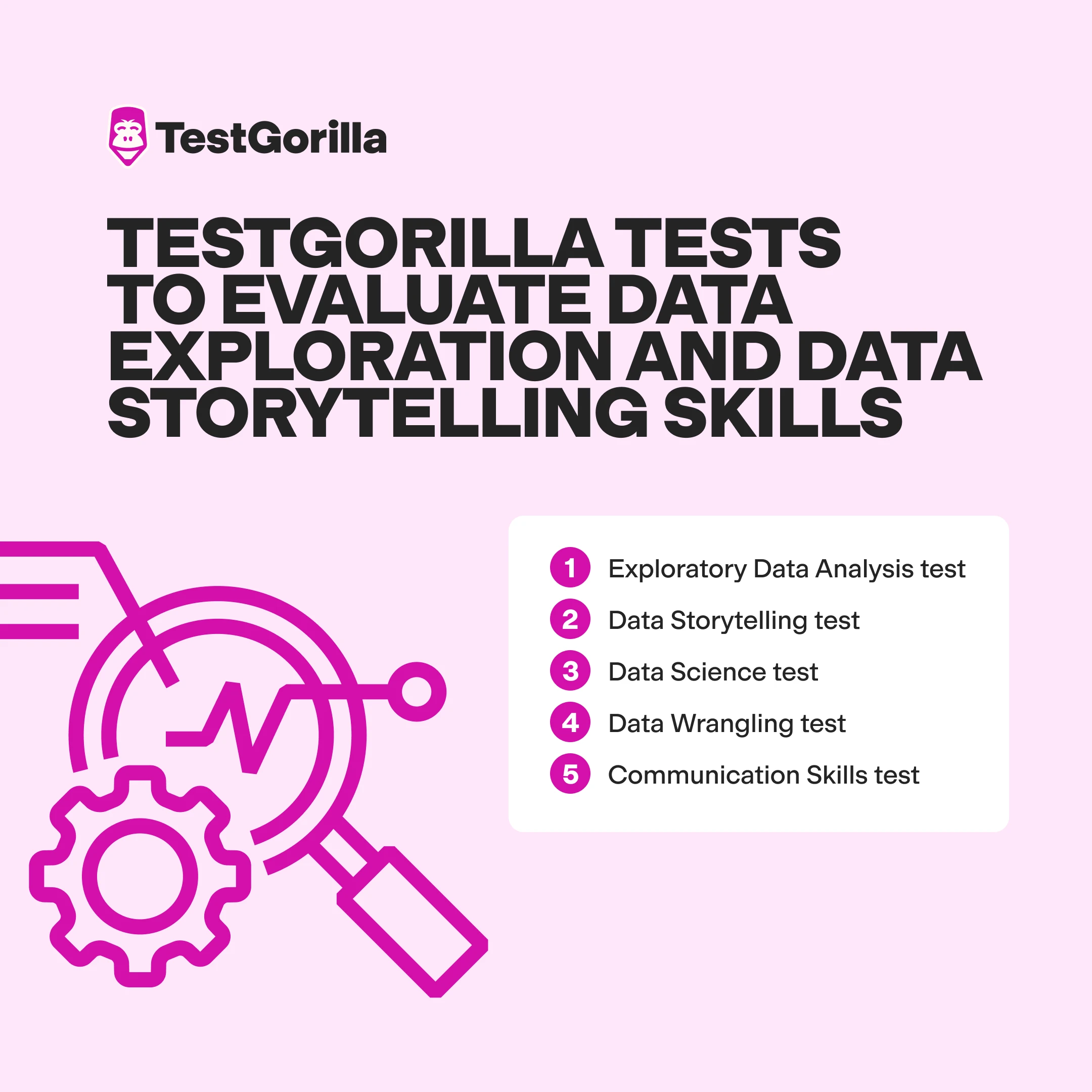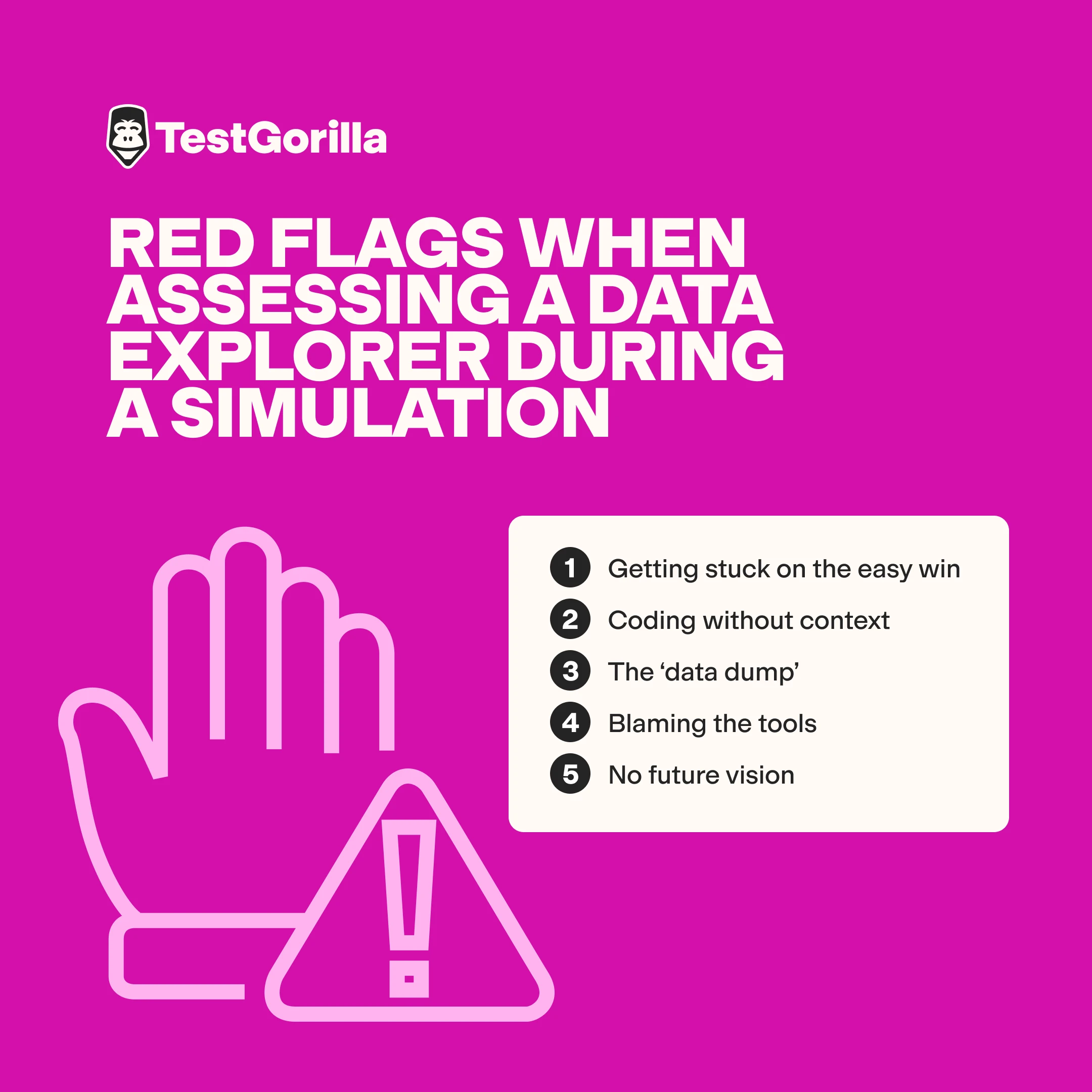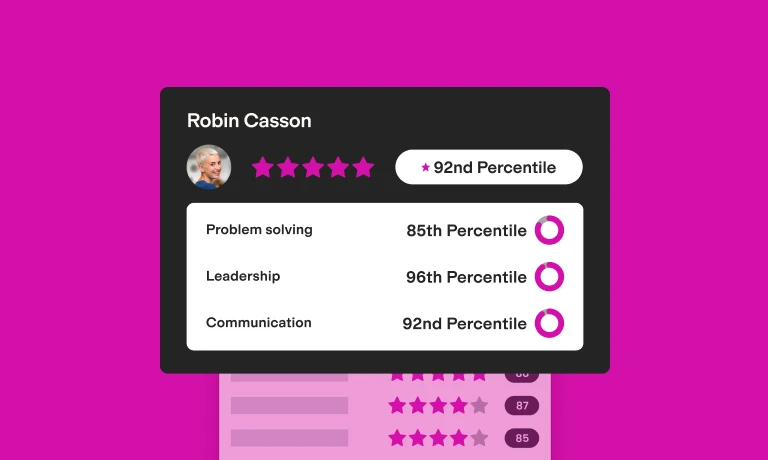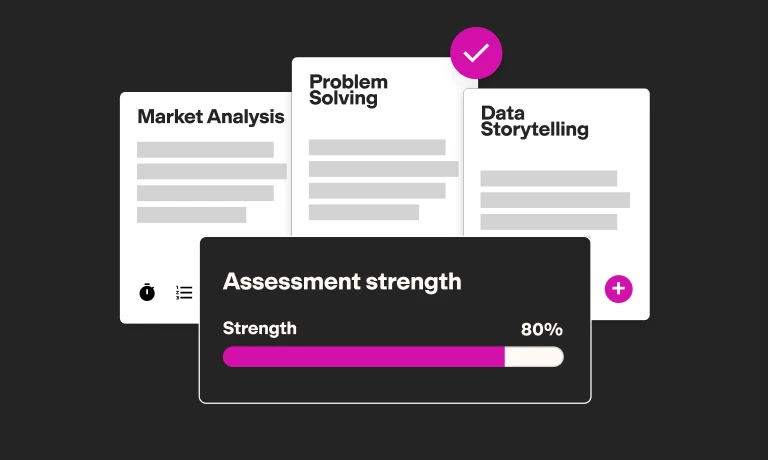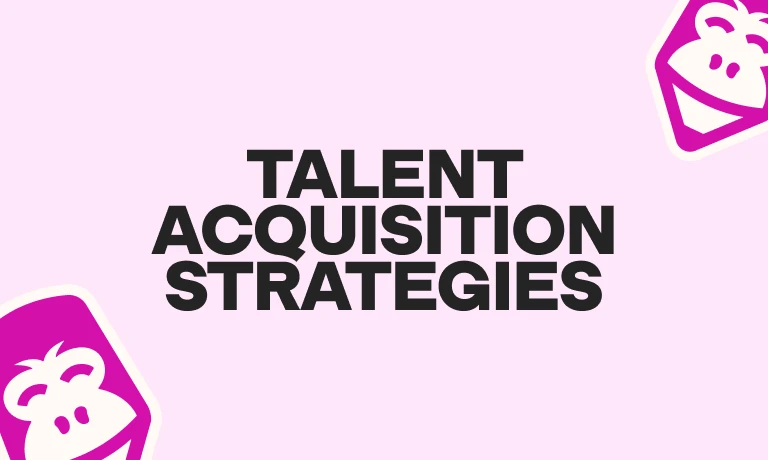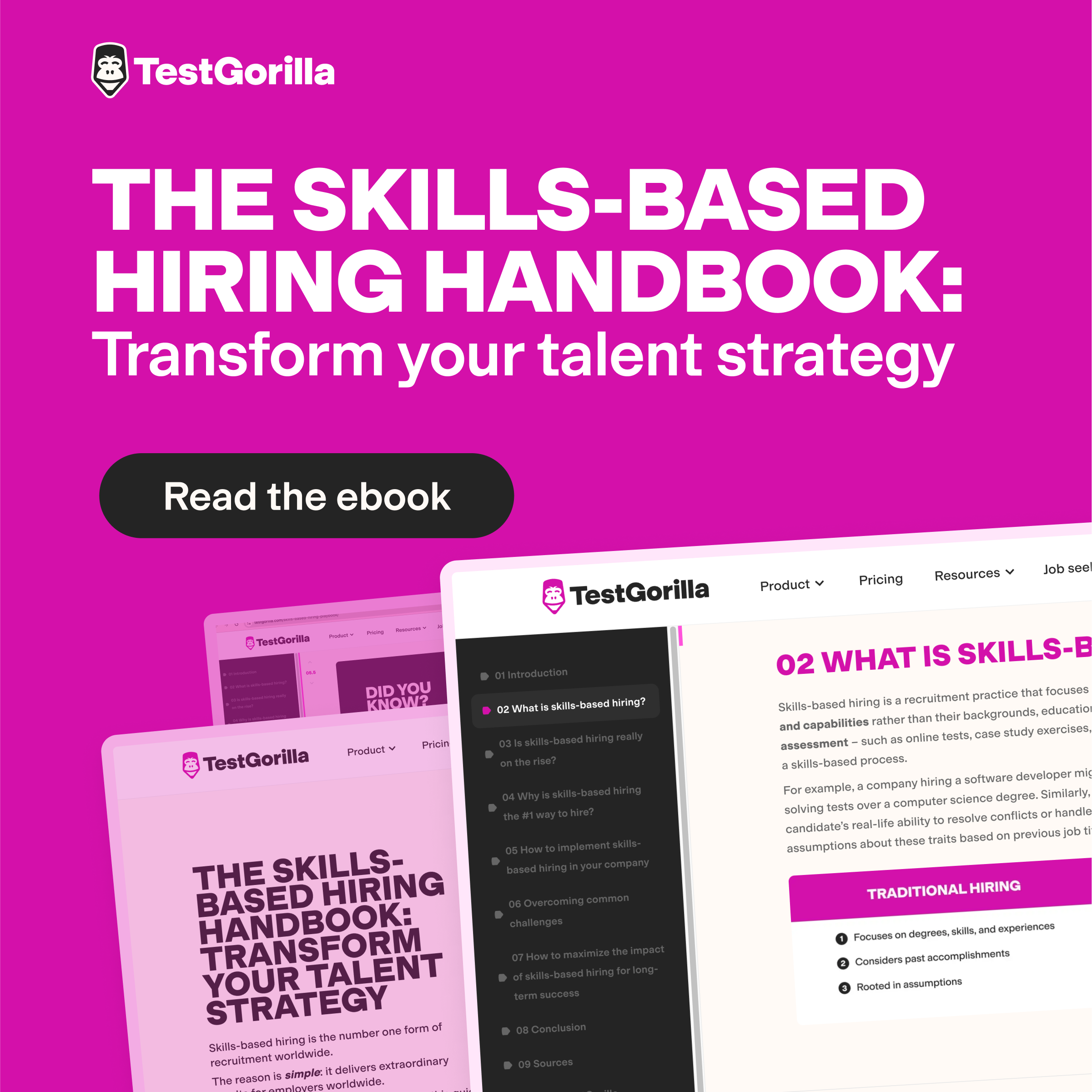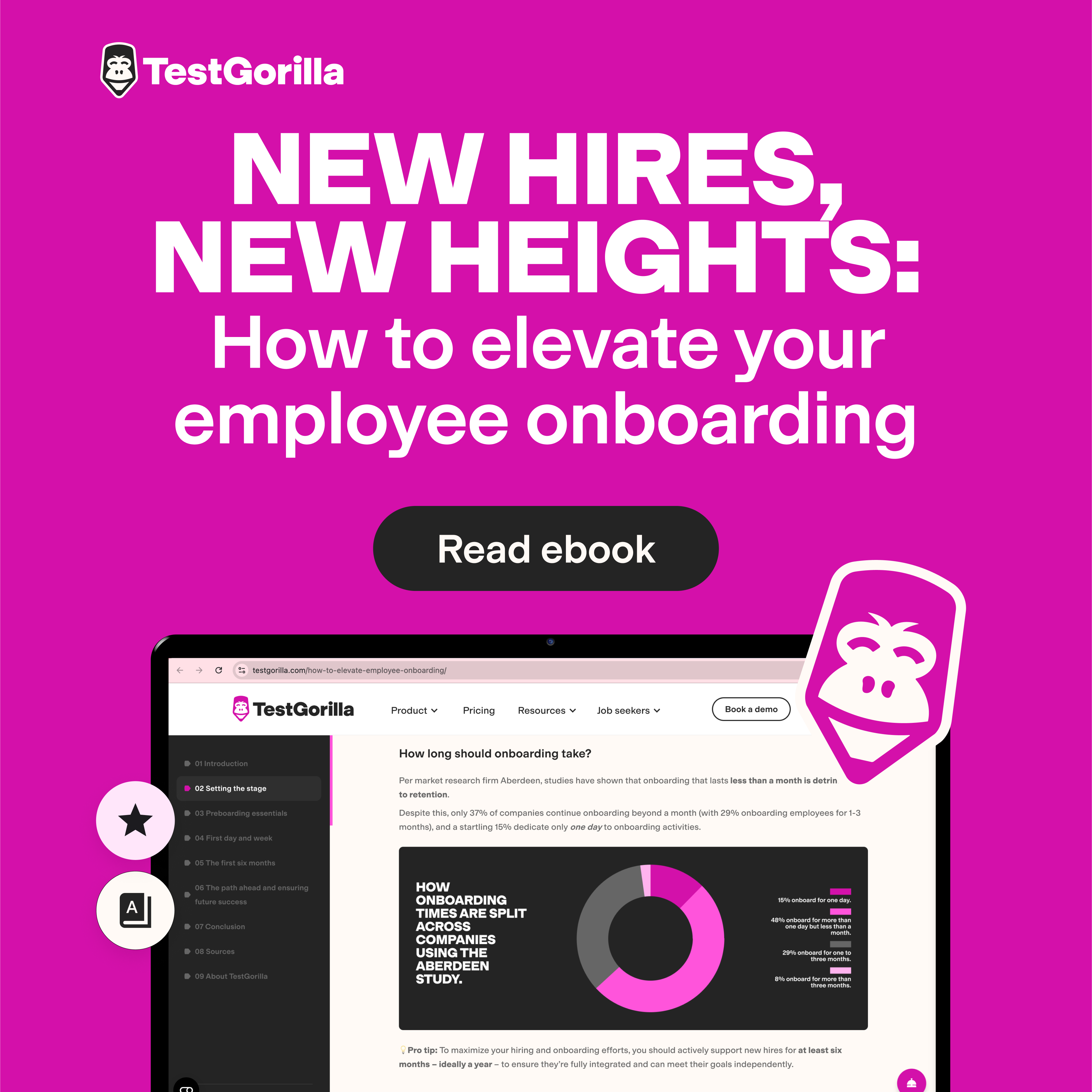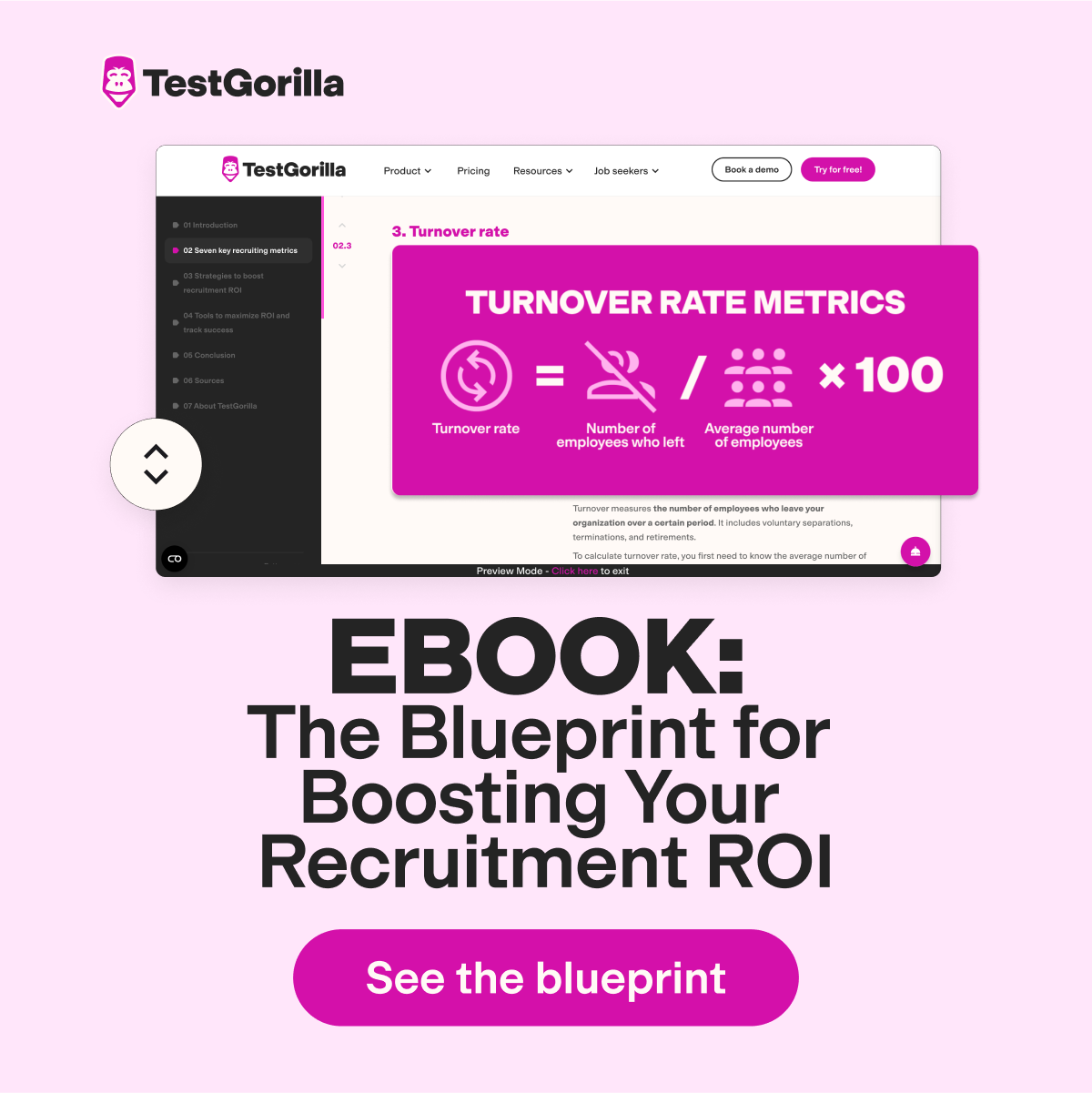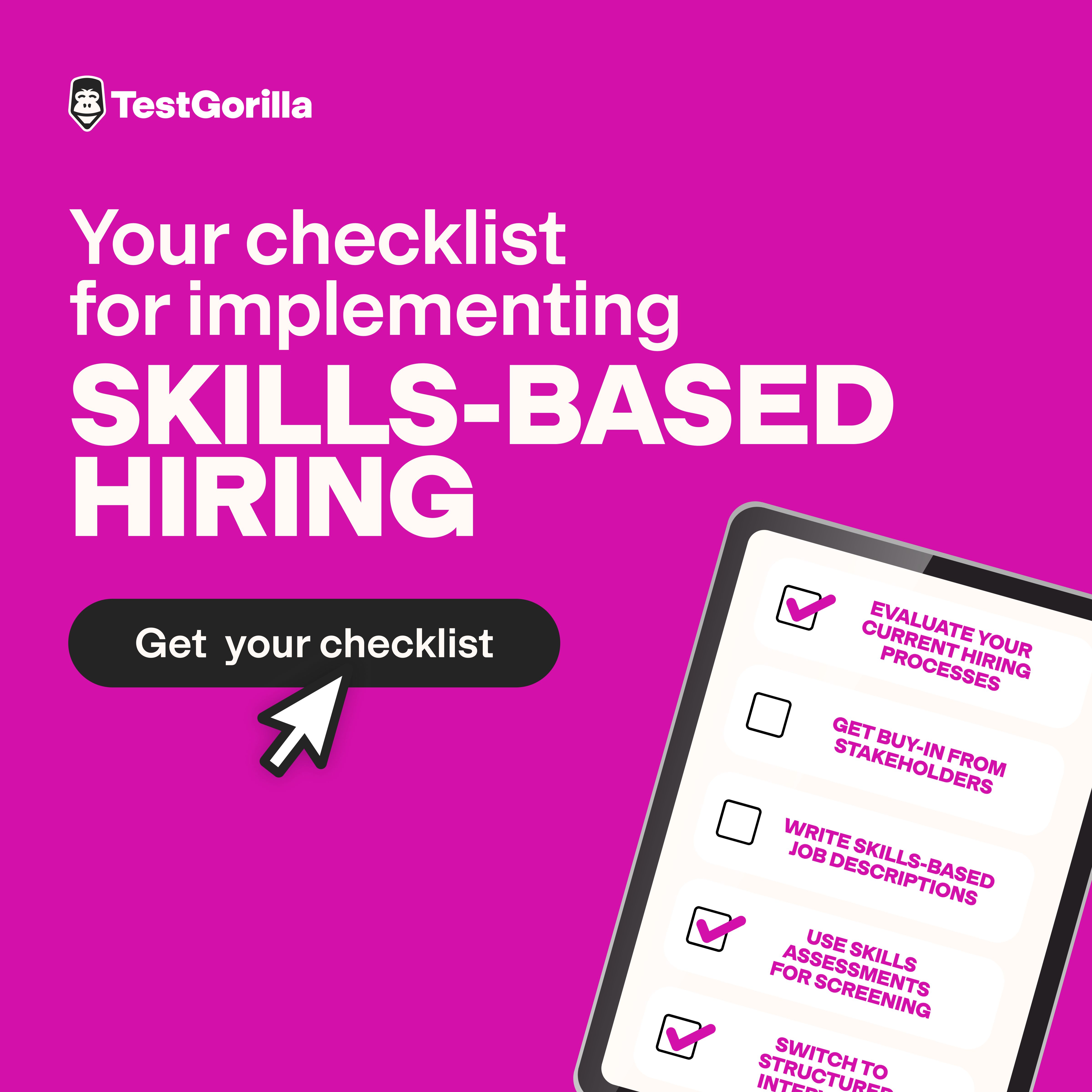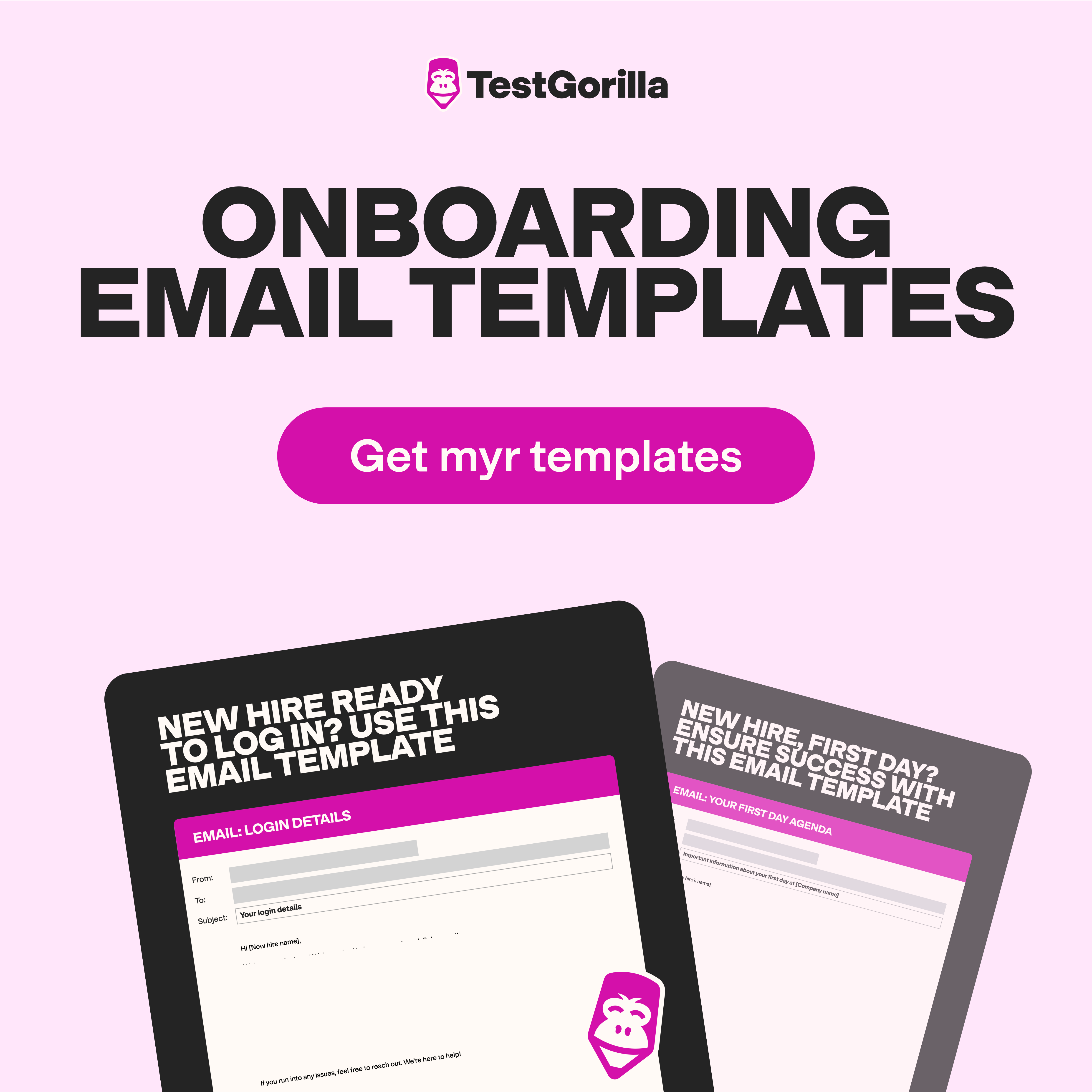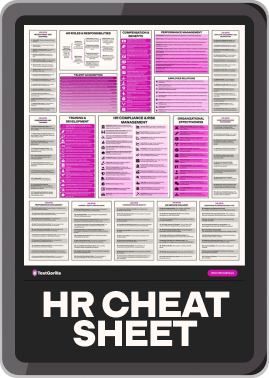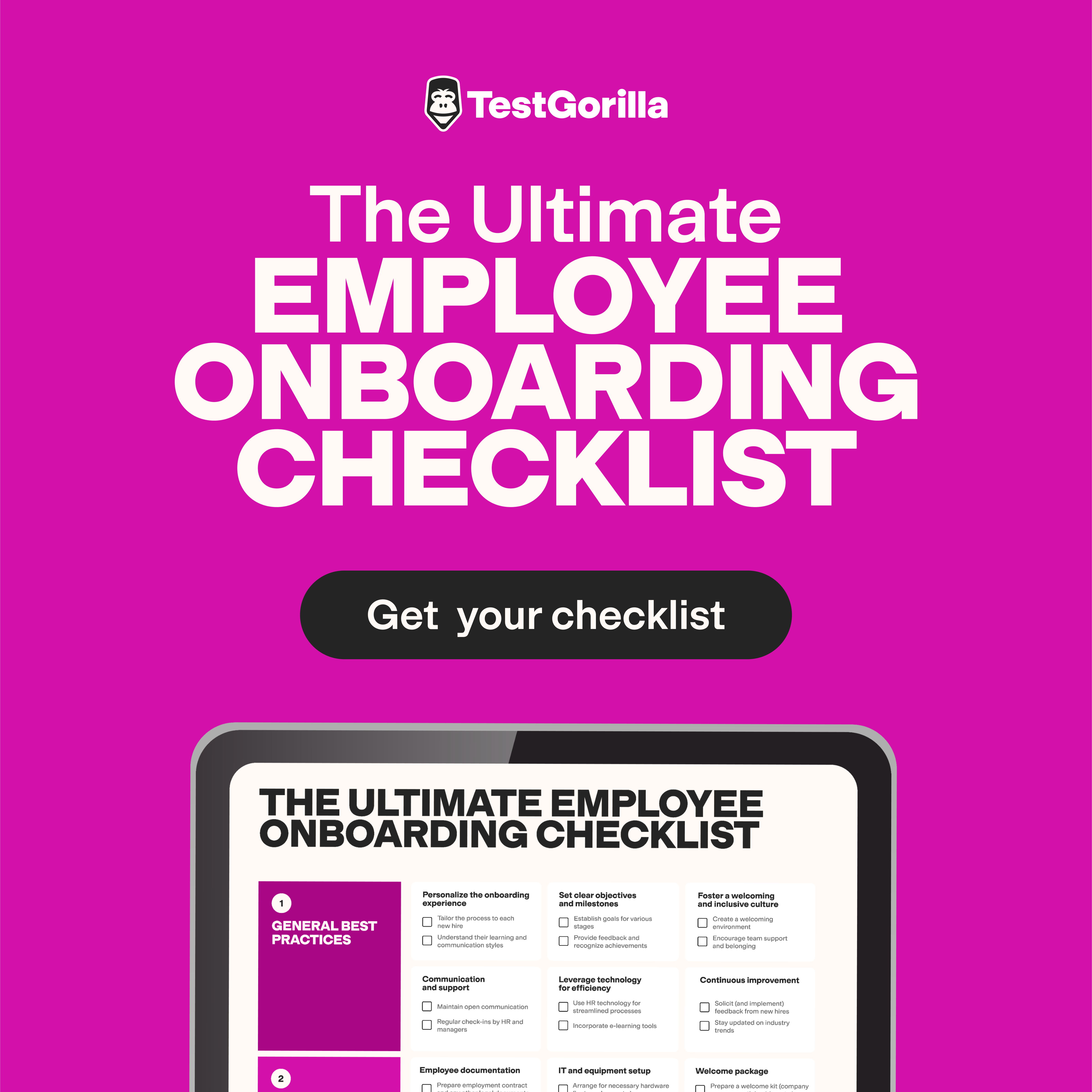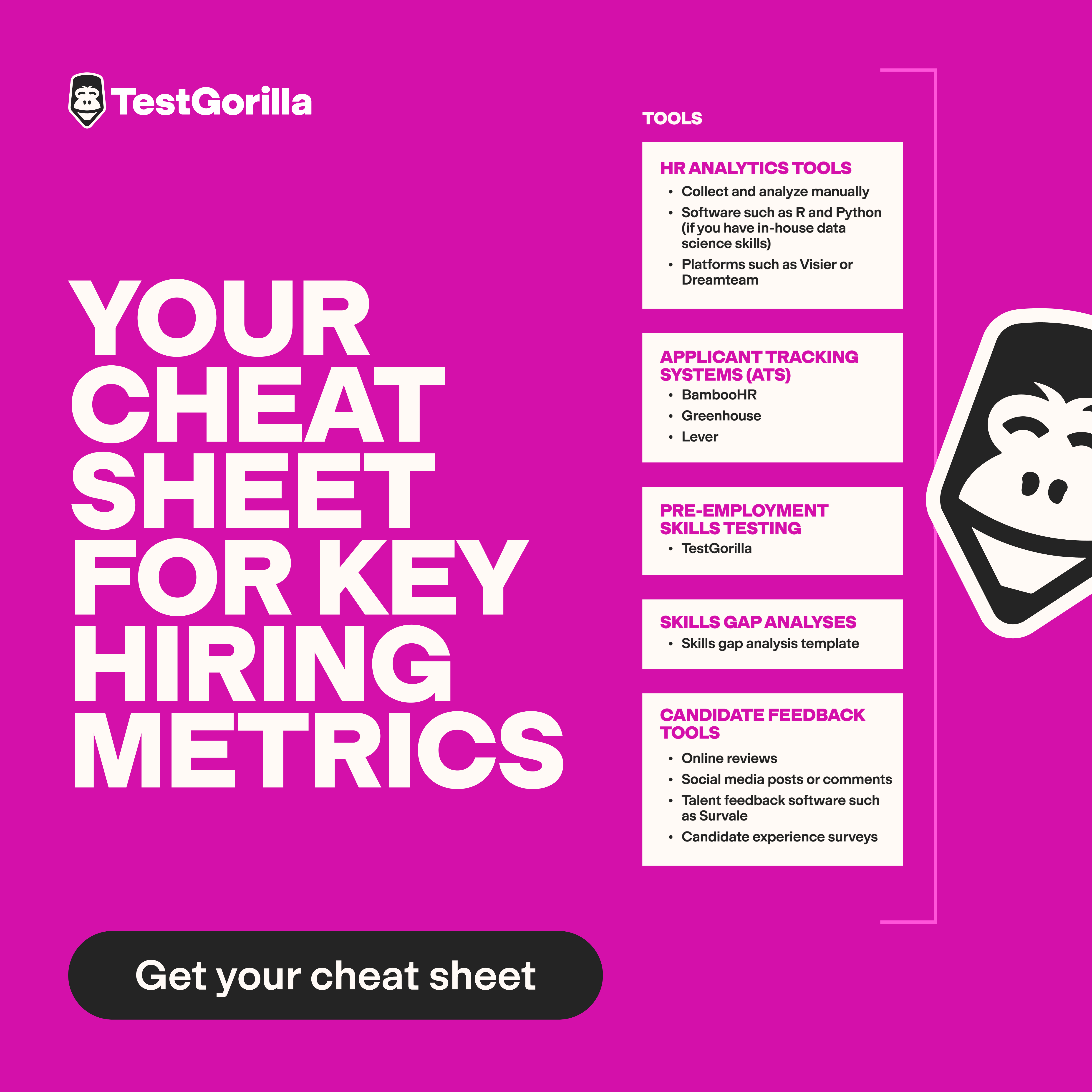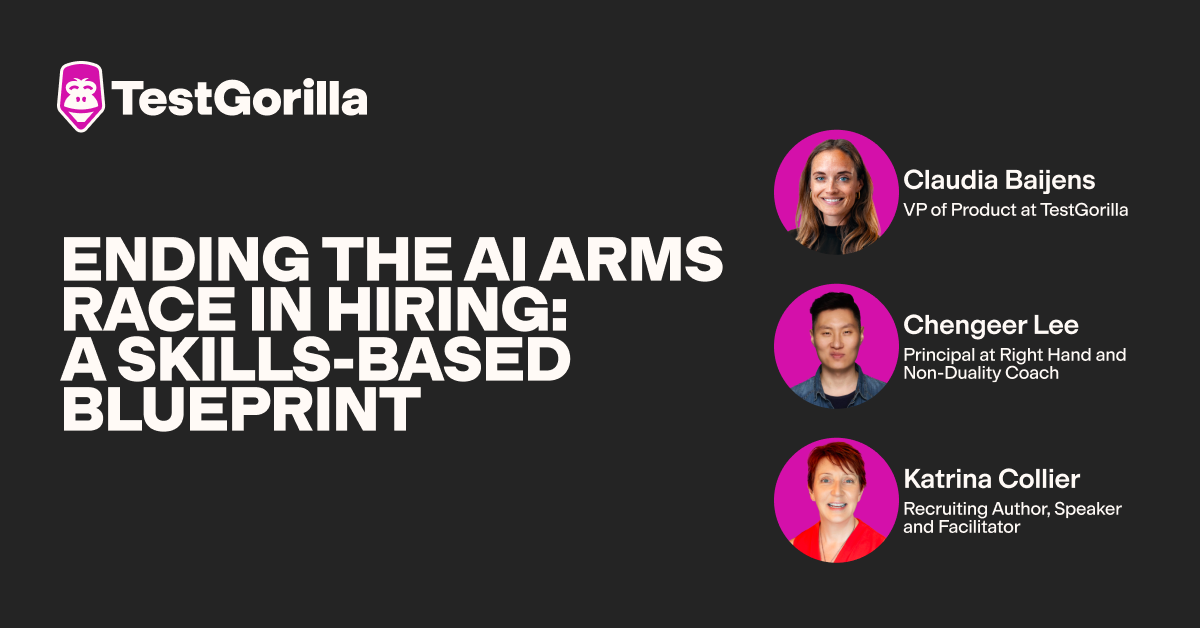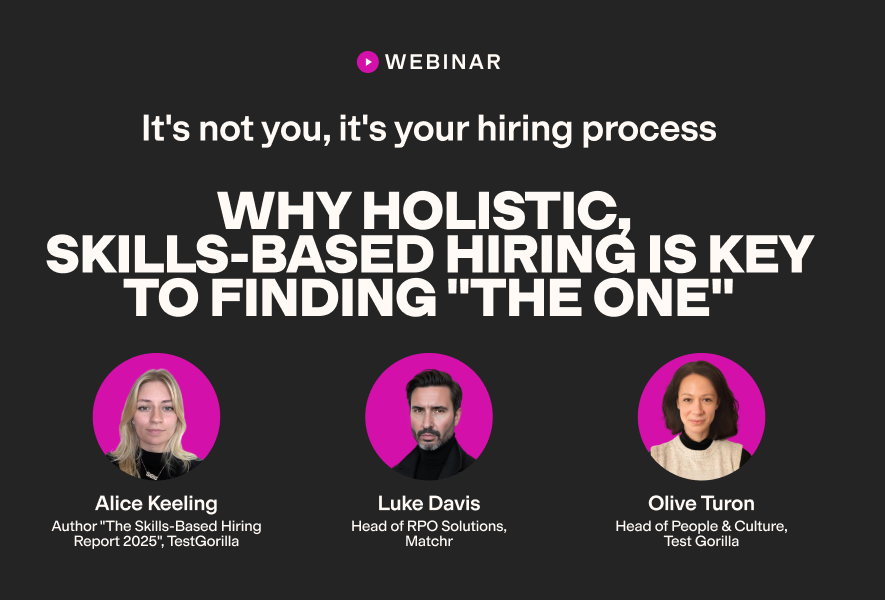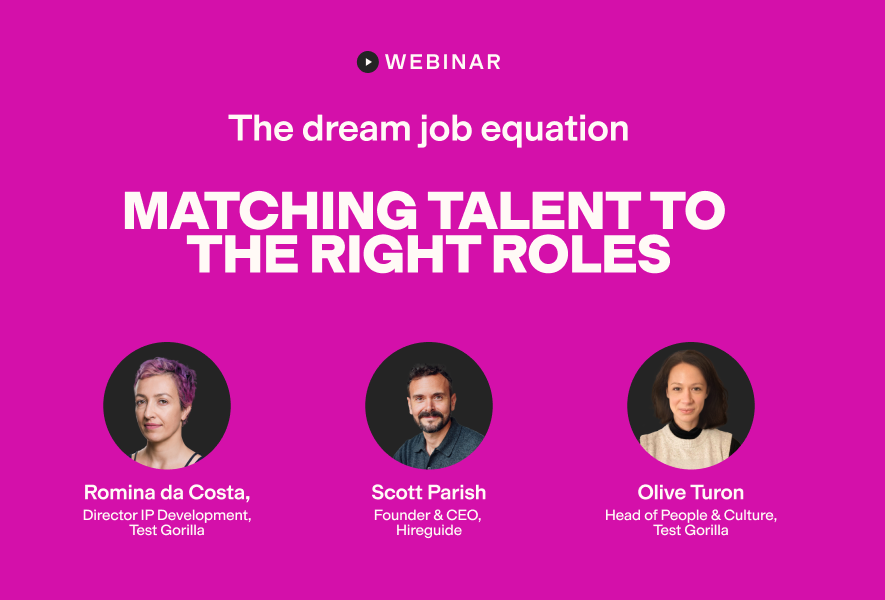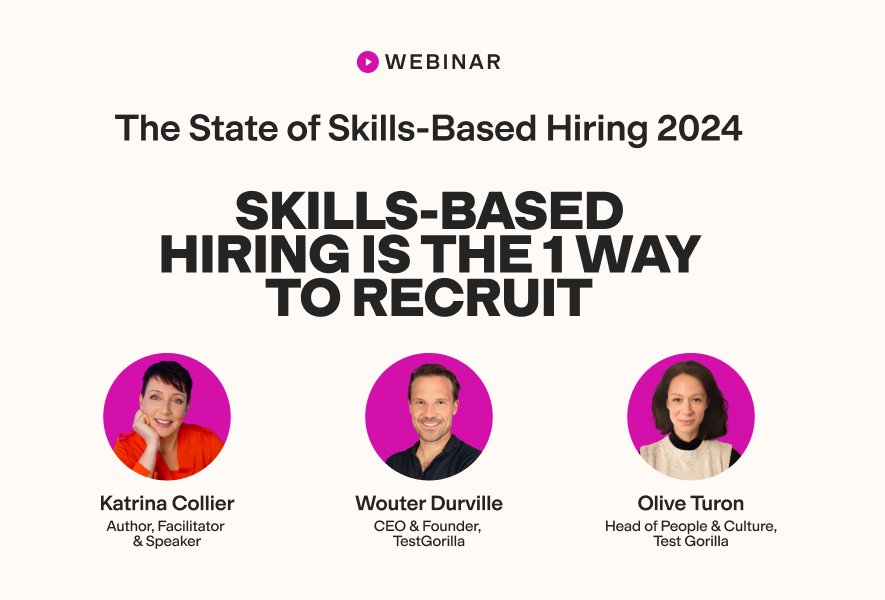Data exploration occurs when a curious mind meets a messy dataset, transforming confusion into clarity and questions into insight.
It’s a nice-sounding definition – if only finding your next analyst were so simple. Interviews can miss their true problem-solving abilities, and paper-thin resumes hide the full picture of what they can do.
What you need is to properly assess candidates’ data exploration skills before you even look at their resume or consider them for an interview.
And we’re here to show you how.
We’ve consulted with hiring leaders and leaned on TestGorilla’s internal hiring expertise to bring you an evaluation method that spans talent assessments (including our Exploratory Data Analysis test and our Data Storytelling test), data simulations, and more.
Ready to dive in?
What is data exploration, really?
Data exploration is the ability to investigate data and reveal insights that aren’t obvious at the outset. Unlike routine reporting and querying, it combines various hard and soft skills, data literacy, and critical curiosity to uncover the “why” behind the numbers.
Data exploration is also different from data explanation. For example, explaining why sales are up in Manhattan and down in Buffalo is a data explanation. Data exploration is about digging into unexpected anomalies and challenging the status quo. It’s about asking why the sales figures are consistently lower in Buffalo – is it a product mismatch? A supply chain delay? Or something no one’s considered yet?
Why is data exploration important?
In a world where knowledge is power – especially when it comes to navigating consumer behavior – data exploration is how teams get ahead. It goes beyond basic reporting to drive better decisions through trend detection, deeper problem-solving, and identifying opportunities before others do.
Why interviews alone can’t measure data exploration
Data exploration isn’t a static skill – it’s a process that unfolds in real time. Traditional interviews, however, create controlled environments that don’t always reflect how people behave “in the wild.” They can be great for assessing what candidates have done before, but not always what they will do in the workplace.
When Erik Bernhardsson, Founder and CEO of Modal Labs, spoke to us about assessing data exploration and data analyst skills, he dropped a truth bomb:
“The correlation between who did really well in the interview process and who performs really well at work is really weak.”
Additionally, interviews tend to favor candidates who are articulate rather than analytical. The best data analysts and explorers may not be the most eloquent, or even the most confident. They might be quiet, considered, or need time to process. But give them a problem to investigate, and they’ll uncover insights no one else thought to look for. That’s not something you can always spot in a conversation.
According to TestGorilla’s 2025 State of Skills-Based Hiring Report, 72% of employers – and 82% of job seekers – already recognize that evaluating candidates holistically (through skills, cultural alignment, and personality) leads to better hiring decisions and improved outcomes.
The takeaway? To assess your candidates effectively, you need to go beyond interviews and uncover their real-world skills and attributes.
The best insights on HR and recruitment, delivered to your inbox.
Biweekly updates. No spam. Unsubscribe any time.
How to assess data exploration skills the right way
Using single-strand hiring methods – like resumes, interviews, or gut instinct – means you’re only seeing a fraction of what a candidate can bring to the table. But adopting a multi-measure talent discovery approach? That’s where the magic happens.
Here’s how to assess data exploration skills like a pro:
Step 1: Start with a talent assessment
Before you look at a single resume or bring anyone in for an interview, start by assessing your candidates’ core capabilities. Talent assessments give you a clear, objective view of how they think, solve, and reason – in ways that resumes and interviews can’t.
That’s why 85% of employers are now using skills-based hiring – up from 81% in 2024. This shift carries a clear message: Companies are realizing that traditional signals (like education or work history) don’t always predict real ability.
Starting your hiring process with talent assessments also saves you time and money. By pre-sifting candidates, you focus only on those with real potential – cutting down on resume reviews, phone screens, and dead-end interviews. Plus, you avoid the significant cost of hiring the wrong person for your open role.
Convinced? TestGorilla has several tests you can use to create a custom assessment to evaluate data exploration and data storytelling skills:
Exploratory Data Analysis test: Tests how candidates explore messy datasets and surface insights.
Data Storytelling test: Measures how well a candidate can extract, shape, and communicate insights from data.
Data Science test: Assesses fundamental knowledge of descriptive statistics, statistical analysis, data science, machine learning, and artificial intelligence.
Data Wrangling test: Evaluates candidates’ data cleaning skills and abilities to transform data for accurate analysis.
Communication Skills test: Tests how clearly candidates can present their findings to technical and non-technical stakeholders.
Step 2: Conduct a smarter interview
Although they’re not enough on their own, face-to-face interviews do have a place in data explorer recruitment. But you must keep them structured and focused. At this stage, you’re validating what you’ve already seen through their performance in the talent assessment, not making guesses based on vague questions or “gut feel.”
Here’s what to use in your interviews to make them count:
Structured behavioral questions
The best data explorer and data analyst interview questions are those that dig into how candidates have approached problems in the past. (Questions that simply check for the requirements listed in your data analyst job description aren’t going to cut it.)
For example, “Describe a situation where your initial hypothesis turned out to be wrong. What did you learn, and what did you do next?” and “Can you share an example of when you had to adapt your approach mid-way through a data exploration project?” are great questions to ask.
Look for evidence of curiosity, adaptability, and analytical rigor in their answers.
Case study discussions
Present a real-world scenario, such as “Imagine you're analyzing a customer churn dataset for a subscription product. How would you approach identifying churn signals?”
Listen to how they break down the problem, what assumptions they test, how they prioritize what to explore, and whether they ask clarifying questions.
Think-aloud questions
Have candidates narrate their reasoning as they tackle a problem, such as interpreting scatter plots or other data visualizations.
For instance, you could tell them, “Here’s a simplified dataset of transactions, including timestamps, product categories, and user IDs. As you look through it, talk me through what you're noticing and what you’d want to explore further.”
Listen for how they process complexity, handle ambiguity, and adapt their approach in real time.
Competency rubrics
Lastly, score candidates consistently against the same standards. For example, you can create a list of categories (e.g., adaptability, communication, analytical approach, and curiosity), score each answer from 1–5, and write notes under each category. This helps keep your interview process fair, transparent, and repeatable.
Step 3: Finish off with a simulation
If talent assessments show you what a candidate can do, simulations can highlight what they can’t do – or haven’t yet had to. Together, they form a powerful one-two punch, giving you a more complete picture of someone’s capabilities than interviews or credentials ever could.
Simulations place candidates in scenarios that mirror what they’ll actually face on the job. You’ll get to see how they think, adapt, prioritize, navigate visualization tools, or problem-solve in the face of missing values, poor data quality, conflicting metrics, and more.
We spoke with Nikodem Gabler, Marketing Lead at DoubleData, who shared how the company runs what they call a “Data Crisis Simulation” in place of a take-home test:
“We don’t do take-home tests. The whole ‘Data Crisis Simulation’ is our practical assessment. It’s a real-world scenario pulled directly from the types of fires we have to put out in the food delivery data industry.
Throughout the two hours, we’re watching for specific red flags. These are the things that tell us a candidate just isn’t ready for the role.”
What are those red flags? Gabler shared five major ones with us:
“Getting stuck on the easy win. They find the obvious, low-impact ‘red herring’ bug and waste way too much time on it, proud that they fixed something while the real house is burning down.
“Coding without context. They dive headfirst into the code without asking a single question to understand the business situation. They don’t seem to care why it’s broken.
“The ‘data dump.’ In the final presentation, they just throw a bunch of corrected tables on the screen. They can’t synthesize the information or explain what the numbers actually mean for the business.
“Blaming the tools. They complain that the data is messy or that the environment is slow. It's a sign they make excuses instead of just owning the problem and solving it.
“No future vision. They fix the immediate bugs but offer zero recommendations on how to prevent them from happening again. They’re a problem cleaner, not a system builder.”
Naturally, simulations take more time than a straightforward interview. However, when you’re hiring a data analyst or data explorer, that extra time you invest upfront saves you from the far greater cost of a bad hire later.
But remember, your simulation must be well-designed. Don’t rush it, and ensure it actually reflects the real job. Otherwise, you’ll leave candidates with a sour taste in their mouths.
Take this Reddit post from a candidate who had a poor experience with a live data exploration task:
"The live data exploration was the f***ing dumbest thing I’ve ever done. Giving me a dataset that I’m not a domain expert on, not related to the role, and asking me question[s] without letting me actually explore the data first. Should have been a f***ing take home."
This is a reminder that the wrong assessment tactic can turn away a potentially perfect hire. But the right one? It gives you unmatched clarity into who will take your data analytics to the next level.
Nail your next hiring campaign with TestGorilla
Data exploration is a unique blend of hard skills, soft skills, curiosity, and passion. With the right assessment approach, you can find someone with true analytical skills – a professional who can get to the bottom of the numbers, not just crunch them.
That’s why we advocate for a skills-based, multi-measure hiring process that starts with talent assessments. These enable you to test the various capabilities that matter for your open role – before you get to the interview stage. From there, the key is to conduct interviews that ask smart questions and roll out simulations that mirror the position you’re filling.
Overall, this approach gives you a complete view of how candidates think, how they approach issues, and what their unique strengths and qualities are.
TestGorilla can help you kickstart a skills-based hiring approach today. Get started by creating your free account or booking a free demo.
Related posts
You've scrolled this far
Why not try TestGorilla for free, and see what happens when you put skills first.


